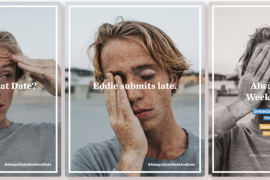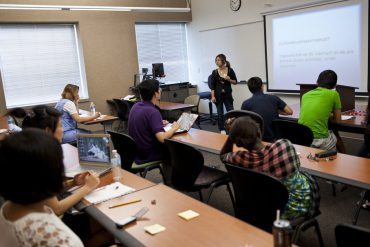Student engagement, connectedness, and sense of belonging feature prominently in our day-to-day conversations about learning design. There are so many factors to consider when teaching a diverse student population that it can leave us feeling overwhelmed and not knowing where to start. How can we cater for everyone’s individual needs? Where do we find the time to do it? Universal Design for Learning (UDL) could be the answer you’re looking for. A simple framework based on scientific insights into how humans learn, UDL can guide the way we think and approach learning design to increase opportunities for students to feel connected and engaged with their learning.
A universal approach to learning design starts with a frame of mind
The Universal Design for Learning framework is organised under three broad networks of the brain that relate to the why (affective), what (recognition) and how (strategic) of learning and offers suggestions for how we can activate those networks through our teaching and learning design. A universal approach to learning design requires us to think about the diversity of our students at the start of the design process and intentionally incorporate multiple ways for them to feel connected, to comprehend, and to demonstrate their learning.
Here are three examples of how you might rethink your approach to learning design:
1) Student variability is predictable, it can be designed for
When it comes to learning, no two brains are the same, just like a thumbprint. There are many factors that influence learning ranging from prior learning, cultural and linguistic background, to the way we are impacted on any given day by social, emotional or health factors. In order to provide the most effective learning environment for all of our students, we must first view variability as something that we can predict and plan for. For example, intentionally designing prework to cater for different levels of interest, available time and prior knowledge might include a Padlet with a choice of article, video, podcast all on the same topic.
2) Design to the edges, not the average
In his Tedx Talk The myth of average, Harvard Professor Todd Rose claims that designing for the average student means designing for no one at all. A more effective strategy is to focus on the students on the edges and incorporate their needs into the learning design that everyone will access. For example, ensuring captions are available for all video recordings and live video meetings is an intentional design feature essential for a student with a hearing loss, but beneficial for a student whose first language is not English, or for a student who needs to mute their sound.
3) Keep the goal separate from the means of achieving it
Students are more likely to engage with and achieve the learning goal when the purpose of the learning experience is clear and they get to choose the way they go about their learning. Unintentionally embedding the means into a goal can distract students from the learning and limit opportunities for them to achieve. For example, while some students may excel when delivering an oral presentation, others may get distracted by the presentation at the expense of the content, and some may be so overcome with fear that they are unable to demonstrate their learning. If the goal is not about presentation skills, students can be given a choice in how they can impart their new knowledge.
Top tips for getting started with UDL
Dr Benjamin Miller, Lecturer in the Faculty of Arts and Social Sciences, has been working with Sarah Humphreys, Educational Designer, to apply the UDL framework in the redesign of WRIT1001. Ben keeps a realistic approach to getting started with UDL and shares his top three tips in the video below:
- Start small – pick one thing you know you can work on
- Know who you are designing for – use the Knowing Your Student data
- Connect with the UDL community – get ideas and support from others working with UDL (see the options listed below under Want to know more?)
Want to know more?
- Book a 30 minute UDL Consult to help you navigate the UDL guidelines and apply them to your teaching and learning design.
- Join Educational Innovation’s UDL Chat on the first Wednesday of each month to share with colleagues your UDL ideas, inspirations and conundrums.
- Check out the UDL@Sydney resources section of the Teaching Resources Hub, containing an overview of what UDL is, practical examples of UDL implementation at the University of Sydney and links to more resources.







3 Comments